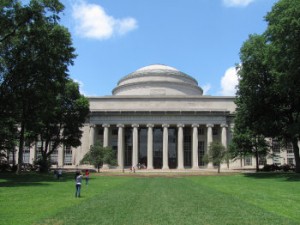
“MIT’s Building 10 and the Great Dome overlooking Killian Court” by John Phelan is licensed under CC BY 2.0.
In advance of the Association of University Technology Managers meeting next week in New Orleans, we continue to profile innovations from some of the most renowned research institutions in the United States.
The Massachusetts Institute of Technology of Cambridge, MA, is a private research university with a strong focus in engineering and the physical sciences. The institution has supported a wide range of innovation in various sciences since its founding in 1861.
MIT supports a wide array of programs for pursuing innovation in medical technologies, alternative energies, robotics and much more. The university hosts an annual research and development conference, the most recent of which involved presentations in carbon-based nanotechnology, energy storage and environmental compliance technology. The MIT Innovation Initiative is another program designed to drive research and development across the institution and strengthen MIT’s innovation capabilities. Currently, the university boasts a staff of 3,750 researchers who are supplemented by nearly 600 scientists and visiting faculty.
Inventions developed in the research facilities of MIT have a way of capturing the imagination of the media. One research team from the institution recently unveiled a new power cord which allows a user to dim a light or turn off a device by bending or stepping on the cord. Another team, the MIT Personal Robot Group, has developed a zipper with a self-zipping mechanism for clothing. These innovations often support successful start-up businesses which are created to market MIT’s technologies. For example, one company founded by MIT nuclear science graduates developing methods of generating energy from nuclear waste recently received $2.5 million from outside investors.
With 281 patents granted by the U.S. Patent and Trademark Office in 2013, the Massachusetts Institute of Technology placed 121st among all entities receiving U.S. patent grants in that year. With the help of Innography’s analytical research tools, we learned that MIT was assigned a total of 287 U.S. patents during 2014.
[Bio-Pharma]
MIT’s Issued Patents: From Chemical Warfare Agent Detection to More Natural Human-Robot Interactions
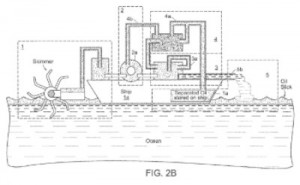 A few of the patents that have been issued to the Massachusetts Institute of Technology in recent weeks protect inventions developed to address major public health and environmental safety concerns. A novel technique for remediating oil spills in open waterways is disclosed and protected by U.S. Patent No. 8945393, which is titled Magnetic Colloid Petroleum Oil Spill Clean-Up of Ocean Surface, Depth, and Shore Regions. The patent claims a method of removing oil from water by mixing a magnetizable material with water to form a magnetorheological fluid and magnetically attracting that water to separate the oil and water phases. This innovation allows for the magnetization of oil to remove oil from water sources and transfer the oil to storage while releasing water back into the ocean. The detection of hazardous chemicals for manufacturing or homeland security operations is described within U.S. Patent No. 8951473, titled Devices and Methods for Determination of Species Including Chemical Warfare Agents. The device for determining an analyte protected here contains multiple electrodes and a sensor material comprised of carbon nanotubes and a polymer material which is in electrochemical communication with the electrodes for affecting resistance to current flow. The device is designed to provide high precision detection of chemical analytes, even at low concentrations, without the complexity and high cost of device fabrication used in conventional chemical detection systems.
A few of the patents that have been issued to the Massachusetts Institute of Technology in recent weeks protect inventions developed to address major public health and environmental safety concerns. A novel technique for remediating oil spills in open waterways is disclosed and protected by U.S. Patent No. 8945393, which is titled Magnetic Colloid Petroleum Oil Spill Clean-Up of Ocean Surface, Depth, and Shore Regions. The patent claims a method of removing oil from water by mixing a magnetizable material with water to form a magnetorheological fluid and magnetically attracting that water to separate the oil and water phases. This innovation allows for the magnetization of oil to remove oil from water sources and transfer the oil to storage while releasing water back into the ocean. The detection of hazardous chemicals for manufacturing or homeland security operations is described within U.S. Patent No. 8951473, titled Devices and Methods for Determination of Species Including Chemical Warfare Agents. The device for determining an analyte protected here contains multiple electrodes and a sensor material comprised of carbon nanotubes and a polymer material which is in electrochemical communication with the electrodes for affecting resistance to current flow. The device is designed to provide high precision detection of chemical analytes, even at low concentrations, without the complexity and high cost of device fabrication used in conventional chemical detection systems.
A few intriguing medical innovations were among the MIT patents we recently surveyed. U.S. Patent No. 8940732, entitled Diagnosis of Autism Spectrum Disorders and Its Treatment With an Antagonist or Inhibitor of the 5-HT2c Receptor Signaling Pathway, expresses a biochemical discovery which aims to treat autism and related disorders through genetic therapy. The patent claims a method of treating an autism spectrum disorder by administering an antagonist or inhibitor of the 5-HT2c receptor signaling pathway, which can reduce the availability of brain serotonin. The methods described here also involve testing a human subject for brain overgrowth and deficits in social memory or social interactions. Although other institutions share rights with MIT for the next invention, we were interested to note a vaccine composition designed to treat tobacco addictions outlined within U.S. Patent No. 8932595, issued under the title Nicotine Immunonanotherapeutics. The composition protected by this patent includes synthetic nanocarriers with immunofeature surfaces comprising a plurality of nicotine moieties which bind to antigen presenting cells and a pharmaceutically acceptable excipient. The technology, developed in part by Harvard University of Cambridge, MA, and Brigham and Women’s Hospital of Boston, MA, utilizes immunomodulatory agents which can reduce the withdrawal symptoms caused by smoking cessation.
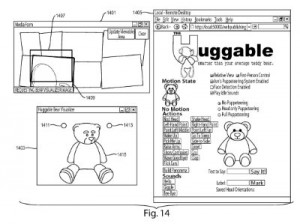 A technology to support better interactions between humans and robots is the focus of U.S. Patent No. 8909370, which is titled Interactive Systems Employing Robotic Companions. The interactive system protected here includes a robot and an operator interface for accepting input from and displaying output to a remote human operator; the system allows for the robot to engage in affective touch and social touch or exhibit a set of behaviors such as crying, giggling or clapping. The invention is intended to improve upon human-robot interactions which can typically suffer from the emotionless state of the robot as well as the discomfort sometimes created by robotic touch.
A technology to support better interactions between humans and robots is the focus of U.S. Patent No. 8909370, which is titled Interactive Systems Employing Robotic Companions. The interactive system protected here includes a robot and an operator interface for accepting input from and displaying output to a remote human operator; the system allows for the robot to engage in affective touch and social touch or exhibit a set of behaviors such as crying, giggling or clapping. The invention is intended to improve upon human-robot interactions which can typically suffer from the emotionless state of the robot as well as the discomfort sometimes created by robotic touch.
 Improved food production processes for the bottling of ketchup, mayonnaise and other viscous food products are disclosed by U.S. Patent No. 8940361, which is titled Self-Lubricating Surfaces for Food Packaging and Food Processing Equipment. The method of manufacturing a container of a consumer product claimed here involves providing a substrate, applying a texture of a solid feature matrix to the substrate, impregnating the matrix with a liquid so that the solid features stably contain the liquid and contacting the impregnated matrix with a consumer product. This self-lubricating technology results in advantageous physical phenomena related to thermofluids for improving the packaging processes of various foodstuffs, including mustard, syrup, honey or jelly, or even consumer products like toothpaste or shampoo.
Improved food production processes for the bottling of ketchup, mayonnaise and other viscous food products are disclosed by U.S. Patent No. 8940361, which is titled Self-Lubricating Surfaces for Food Packaging and Food Processing Equipment. The method of manufacturing a container of a consumer product claimed here involves providing a substrate, applying a texture of a solid feature matrix to the substrate, impregnating the matrix with a liquid so that the solid features stably contain the liquid and contacting the impregnated matrix with a consumer product. This self-lubricating technology results in advantageous physical phenomena related to thermofluids for improving the packaging processes of various foodstuffs, including mustard, syrup, honey or jelly, or even consumer products like toothpaste or shampoo.
[Companies-1]
Patent Applications of Note: From Water Purification to Digital Conversation Coaches
The cleanup of oil from waterway spills was also reflected in a pair of patent applications that we managed to come across. Techniques for separating oil from water locally so that oil-contaminated water does not need to be removed and transported are described within U.S. Patent Application No. 20150001153, which is titled Polymer Particles and Methods of Using These for Oil Recovery. This patent application would protect a method of oil spill cleanup by providing polymer particles, distributing those particles at an oil spill site and retrieving those particles from the site after they have absorbed oil. Some embodiments of this invention allow the polymer particles to be reused multiple times for retrieving oil. More energy efficient and environmentally friendly methods for separating oil and water mixtures are discussed by U.S. Patent Application No. 20140332462, which is titled Flux-Enhanced Hierarchical Porous Membrane for Oil-Water Nanoemulsion Separation. The patent application claims a hierarchical porous membrane that includes a polymer, is both oleophilic and hydrophobic, has multiple layers with pores of different sizes and is configured to separate two or more phases of an oil/water emulsion having droplets below one micrometer (1 µm). The membranes created by this innovation have applications in oil spill cleanup, oil purification, water purification and deep sea oil exploration.
The energy intensive processes of water purification to address fresh water shortages in regions all over the world are enhanced by the technology explored within U.S. Patent Application No. 20140374274, entitled Water Desalination/Purification and Bio-Agent Preconcentration by Ion Concentration Polarization. The method of purifying and/or concentrating a first water stream containing ionic impurities which is claimed here involves directing the water stream in a channel containing two juxtaposed ion exchange members with the same charge, applying an electric field across the water stream channel to generate an ion depletion zone and an ion enrichment zone and collecting the purified water stream and/or the concentrated ion aqueous stream. The resulting desalination system is more economically favorable as it utilizes less energy to remove ions from the water stream.
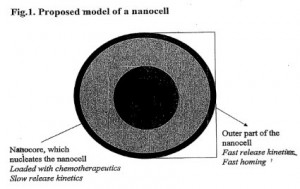 MIT has also invested heavily in the development of novel pharmaceutical innovations, one of which is laid out within U.S. Patent Application No. 20140363497, filed under the title Nanocell Drug Delivery System. The patent application would protect a particle comprising a nanoparticle inside a lipid vesicle; both the nanoparticle and lipid vesicle serve as pharmaceutical, diagnostic or prophylactic agents. This innovation is intended to improve combination drug therapies, such as those which are used to treat cancer, by delivering different active agents at different time intervals. Improved techniques for determining whether a pharmaceutical drug or another type of medical agent would produce toxicity in humans are the focus of U.S. Patent Application No. 20150007357, which is titled Use of Humanized Mice to Determine Toxicity. The method of determining whether an agent causes immune toxicity in a human claimed here involves administering the agent to a non-human mammal that has been engrafted with human hematopoietic stem cells and administered human cytokines and determining whether the agent causes toxicity in the non-human mammal. The cytokine-treated humanized mouse of this invention is much better at predicting the adverse effects of therapeutic agents before administering those to humans.
MIT has also invested heavily in the development of novel pharmaceutical innovations, one of which is laid out within U.S. Patent Application No. 20140363497, filed under the title Nanocell Drug Delivery System. The patent application would protect a particle comprising a nanoparticle inside a lipid vesicle; both the nanoparticle and lipid vesicle serve as pharmaceutical, diagnostic or prophylactic agents. This innovation is intended to improve combination drug therapies, such as those which are used to treat cancer, by delivering different active agents at different time intervals. Improved techniques for determining whether a pharmaceutical drug or another type of medical agent would produce toxicity in humans are the focus of U.S. Patent Application No. 20150007357, which is titled Use of Humanized Mice to Determine Toxicity. The method of determining whether an agent causes immune toxicity in a human claimed here involves administering the agent to a non-human mammal that has been engrafted with human hematopoietic stem cells and administered human cytokines and determining whether the agent causes toxicity in the non-human mammal. The cytokine-treated humanized mouse of this invention is much better at predicting the adverse effects of therapeutic agents before administering those to humans.
The development of alternative forms of energy, specifically biofuels, would be improved by the technology at the center of U.S. Patent Application No. 20150045537, which is titled Extracellular Release of Lipids by Photosynthetic Cells. This patent application would protect a method for harvesting lipids by culturing a photosynthetic cyanobacteria that secretes lipid-containing vesicles into a growth medium and separating the secreted vesicles from the growth medium and/or the cyanobacteria. This novel technique for harvesting high-energy lipid compounds reduces the energy needed to create the environmentally stressful conditions required of conventional methods of harvesting biofuels from photosynthetic microorganisms.
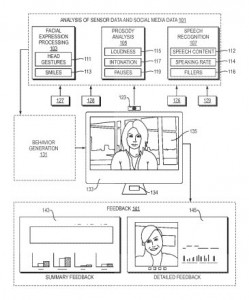 Finally, we were greatly intrigued by one MIT innovation designed to improve interpersonal interactions for those who are preparing for a job interview or generally want to improve their social conversation skills. U.S. Patent Application No. 20140356822, which is titled Methods and Apparatus for Conversation Coach, presents a human user with a virtual character who interacts with a user in such a way that provides feedback on a human user’s conversational skills. The method that would be protected by this patent application involves using a display screen and speaker to present an audiovisual display of an animated character during a period of time in which a microphone and video camera gather audiovisual data of a human user and using the display screen to provide feedback, which can include text, charts or audiovisual recording of the behavior. The virtual coaching mechanism and character can be customized for various social scenarios, such as a job interview or a date.
Finally, we were greatly intrigued by one MIT innovation designed to improve interpersonal interactions for those who are preparing for a job interview or generally want to improve their social conversation skills. U.S. Patent Application No. 20140356822, which is titled Methods and Apparatus for Conversation Coach, presents a human user with a virtual character who interacts with a user in such a way that provides feedback on a human user’s conversational skills. The method that would be protected by this patent application involves using a display screen and speaker to present an audiovisual display of an animated character during a period of time in which a microphone and video camera gather audiovisual data of a human user and using the display screen to provide feedback, which can include text, charts or audiovisual recording of the behavior. The virtual coaching mechanism and character can be customized for various social scenarios, such as a job interview or a date.

![[IPWatchdog Logo]](https://ipwatchdog.com/wp-content/themes/IPWatchdog%20-%202023/assets/images/temp/logo-small@2x.png)

![[Advertisement]](https://ipwatchdog.com/wp-content/uploads/2024/04/Artificial-Intelligence-2024-REPLAY-sidebar-700x500-corrected.jpg)
![[Advertisement]](https://ipwatchdog.com/wp-content/uploads/2024/04/Patent-Litigation-Masters-2024-sidebar-700x500-1.jpg)

![[Advertisement]](https://ipwatchdog.com/wp-content/uploads/2021/12/WEBINAR-336-x-280-px.png)
![[Advertisement]](https://ipwatchdog.com/wp-content/uploads/2021/12/2021-Patent-Practice-on-Demand-recorded-Feb-2021-336-x-280.jpg)
![[Advertisement]](https://ipwatchdog.com/wp-content/uploads/2021/12/Ad-4-The-Invent-Patent-System™.png)






Join the Discussion
No comments yet.